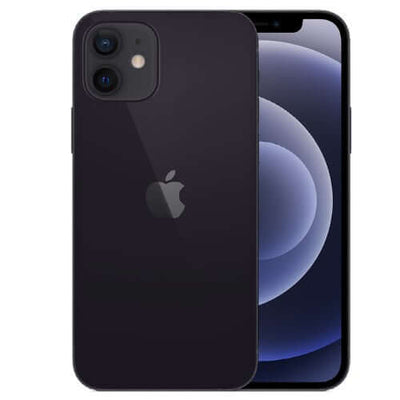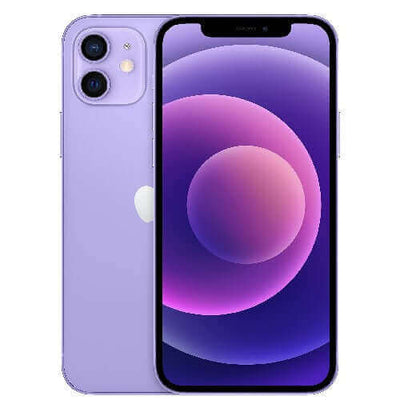Introduction
AI Generated Videos Just Changed Forever.
Impressive and frightening advancements in AI-generated videos have recently taken the internet by storm. Comparing the current AI-generated videos to previous versions shows just how far this technology has come in a short period of time. One of the latest models making waves is Sora, developed by Sam Altman and OpenAI.
Sora is a groundbreaking AI model that can generate full one-minute video clips from just text input. It goes beyond simply creating realistic images and delves into understanding the complexities of video production, including lighting, materials, physics, and more.
Examples of impressive AI-generated videos showcase the model's capabilities. These videos feature stylish individuals walking down neon-lit Tokyo streets, vintage SUVs speeding up steep dirt roads, and adorable golden retriever puppies playing in the snow.
The Advancements in AI-Generated Videos
Understanding the complexities of video production:
AI-generated videos have come a long way in a short period of time, showcasing impressive advancements in understanding the complexities of video production. The latest model, Sora, developed by Sam Altman and OpenAI, goes beyond simply creating realistic images and delves into the intricacies of lighting, materials, physics, and more.
Accurate lighting, materials, and movements:
With Sora, AI-generated videos now feature accurate lighting, materials, and movements. These videos are able to capture realistic details such as skin tones, reflections, and textures. While imperfections may still exist upon close inspection, the progress made in just one year is astonishing.
Identification of imperfections in AI-generated videos:
It's important to note that imperfections can still be found in AI-generated videos, such as inconsistencies in frame rates, reflections, or camera movements. However, these flaws represent the worst that this technology has to offer, and further advancements are expected as models continue to improve.
Comparison to previous AI-generated videos:
When comparing the current AI-generated videos to previous versions, the difference in quality is striking. The earlier videos, such as the ones featuring Will Smith eating spaghetti, were clearly distinguishable as AI-generated. However, the latest videos from Sora have surpassed expectations and can easily pass as real videos to those who are not aware they are AI-generated.
AI-Generated Videos as Stock Footage
The advancements in AI-generated videos have significant implications for the stock footage industry. The ability of AI models like Sora to generate realistic and high-quality videos from just text input has the potential to revolutionize the way stock footage is created and used.
AI-generated videos are highly usable for various purposes, from advertisements and presentations to movie trailers and YouTube videos. The realism and attention to detail in these videos make them indistinguishable from real footage to the untrained eye.
For the stock footage industry, this means that there may be a decline in the demand for footage created by drone pilots, photographers, and videographers. With AI-generated videos becoming more accessible and cost-effective, businesses and content creators may opt for the convenience of using AI-generated stock footage.
Examples of AI-Generated Videos Suitable for Stock Footage
AI-generated videos have already showcased their potential for stock footage. For instance, videos of stylish individuals walking down neon-lit Tokyo streets, vintage SUVs speeding up steep dirt roads, and adorable golden retriever puppies playing in the snow demonstrate the versatility of AI-generated content.
These videos capture accurate lighting, materials, and movements, providing a realistic and immersive visual experience. While imperfections may still exist upon close inspection, the progress made by AI models like Sora is remarkable in just a year.
Effects on Drone Pilots, Photographers, and Videographers
The rise of AI-generated stock footage may have an impact on drone pilots, photographers, and videographers. As businesses and content creators rely more on AI-generated videos, there may be a decrease in demand for traditional footage created by these professionals.
This shift in demand may require drone pilots, photographers, and videographers to adapt their skills and find new ways to differentiate themselves in the industry. They may need to focus on offering specialized services or collaborate with AI models to enhance the quality of their work.
In conclusion, AI-generated videos have the potential to disrupt the stock footage industry. With their usability for various purposes and the ability to replicate real footage, AI-generated videos are changing the way businesses and content creators access and utilize stock footage. This evolution may require professionals in the industry to adapt and find new opportunities to thrive in a changing landscape.
The Future of AI-Generated Videos
AI-generated videos have just changed the game forever. With the advancements in technology, it is now possible for AI-generated content to pass as real videos. This has significant implications for various industries and raises concerns, especially during an election year and beyond.
Potential for AI-generated content to pass as real videos
As AI models like Sora continue to improve, the line between AI-generated videos and real videos becomes increasingly blurred. To the untrained eye, these videos are indistinguishable from real footage. This raises ethical concerns and the potential for misinformation and manipulation.
Concerns during an election year and beyond
In an election year, the ability of AI-generated videos to pass as real poses a serious threat. Deepfakes, which are AI-generated videos that manipulate or superimpose someone's face onto another person's body, can be used to spread false information or damage a candidate's reputation. This has the potential to undermine the democratic process and create widespread confusion.
Usage in advertisements, presentations, and movies
AI-generated videos have immense potential for various industries. In advertising, presentations, and movies, the realism and attention to detail in these videos make them highly usable. They can save time and resources by replacing the need for traditional footage created by photographers, videographers, and drone pilots.
Flaws and limitations of the current AI model
While AI-generated videos have come a long way, they still have flaws and limitations. Inconsistencies in frame rates, reflections, and camera movements can be observed upon close inspection. The current AI model may struggle with accurately depicting certain elements, such as hands or complex interactions. Continued advancements and improvements are necessary to overcome these limitations.
In conclusion, the future of AI-generated videos is both exciting and concerning. The potential for AI-generated content to pass as real videos raises important ethical and societal questions. The impact on various industries, such as the stock footage industry, is significant. However, it is crucial to address the flaws and limitations of the current AI model to ensure responsible and ethical use of this technology in the future.
Conclusion and Future Implications
AI-generated videos have just changed the game forever. With the advancements in technology, it is now possible for AI-generated content to pass as real videos. This has significant implications for various industries and raises concerns, especially during an election year and beyond.
Balancing the impressive capabilities and potential risks
The capabilities of AI-generated videos are impressive, showcasing the progress made in a short period of time. However, it is crucial to balance these capabilities with the potential risks they pose. The ability of AI-generated videos to pass as real raises important ethical and societal questions, such as the potential for misinformation and manipulation.
Safety measures and ethical considerations
As AI-generated videos become more convincing, safety measures and ethical considerations become increasingly important. It is crucial to ensure responsible and ethical use of this technology, especially during an election year. Measures should be in place to prevent the creation and dissemination of deepfakes that can be used to spread false information or damage a candidate's reputation.
Impact on video licensing and stock footage industry
The advancements in AI-generated videos have significant implications for the stock footage industry. The ability to generate realistic and high-quality videos from just text input has the potential to revolutionize the way stock footage is created and used. Businesses and content creators may opt for the convenience of using AI-generated stock footage, leading to a potential decline in demand for footage created by traditional means.
Existential questions about AI's creativity and innovation
The future of AI-generated videos raises existential questions about AI's creativity and innovation. While AI models can generate videos based on existing content, there are questions about whether they can truly be innovative or creative in ways that humans have not already been. Further research and development are necessary to explore the true potential of AI-generated videos and their impact on the creative industry.
In conclusion, the future of AI-generated videos is both exciting and concerning. The potential for AI-generated content to pass as real videos raises important ethical and societal questions. The impact on various industries, such as the stock footage industry, is significant. However, it is crucial to address the flaws and limitations of the current AI model to ensure responsible and ethical use of this technology in the future.
FAQ
1. What is Sora and how does it work?
Sora is a groundbreaking AI model developed by Sam Altman and OpenAI. It has the ability to generate full one-minute video clips from just text input. Unlike previous AI models, Sora goes beyond creating realistic images and delves into understanding the complexities of video production, including lighting, materials, physics, and more. By analyzing the text input, Sora can generate videos that accurately depict the desired scenes and actions.
2. How do AI-generated videos compare to real videos?
AI-generated videos have made significant advancements in replicating the qualities of real videos. While imperfections may still exist upon close inspection, the latest AI models, such as Sora, have surpassed expectations and can easily pass as real videos to those who are not aware they are AI-generated. The progress made in just one year is astonishing, and further improvements are expected as AI models continue to evolve.
3. What are the implications for the stock footage industry?
The advancements in AI-generated videos have significant implications for the stock footage industry. AI models like Sora have the ability to generate realistic and high-quality videos from just text input. This has the potential to revolutionize the way stock footage is created and used. Businesses and content creators may opt for the convenience of using AI-generated stock footage, leading to a potential decline in demand for footage created by traditional means.
4. What safety measures are in place for AI-generated videos?
As AI-generated videos become more convincing, safety measures and ethical considerations become increasingly important. It is crucial to ensure responsible and ethical use of this technology, especially during an election year. Measures should be in place to prevent the creation and dissemination of deepfakes that can be used to spread false information or damage a candidate's reputation. Continued research and development are necessary to address the limitations and potential risks associated with AI-generated videos.






















